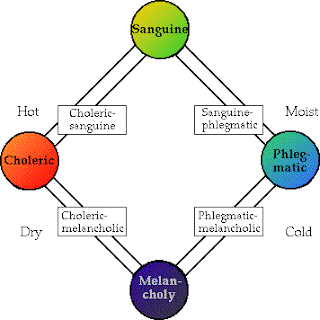I recall a specific day
as an undergraduate at the Cleveland Institute of Music sitting in theory class
on a cold, snowy day. I was probably tired
from working the graveyard shift at Presti’s Bakery, nervous about my upcoming
cello lesson in which I had to play Popper 33 from memory, or dreading the inevitable
humiliation of singing atonal melodies or improvising chord progressions in
front of a classroom of super smart, talented students.
There was a
substitute that day, and he opened my eyes to the sixth sense I didn’t know I
had. He was lecturing on key signatures
and recognizing modulations and tone color changes. The graduate assistant commented that many
people see colors when they hear certain keys – yellow for D-Major, green for
C-Major, blue for d-minor, etc.
Suddenly, I thought to myself, “There is an actual term for
this? I thought I was just weird!” I came to find out that many people have
chromesthesia on some level or another.
I am an amateur visual artist as well as a professional musician, and I
wonder if my chromesthesia has something to do with this.
Synesthesia is “the stimulation of one sense alongside another: the evocation of one kind of
sense impression when another sense is stimulated, e.g. the sensation of color
when a sound is heard”. Technically,
synesthesia is an umbrella term for the ability to associate any one sense with
another, and chromesthesia is the term for the ability to associate color with
music.
I have been thinking about this a lot
recently in my study of the Bach Cello Suites.
Although colors, both tonally and visually, change throughout each
movement, each suite has its own over-all color and is initially expressed
through the Prelude.
I see green when I hear the G major
suite. It is calm, simple, and organic,
which to me implies nature. When I was
working on the first suite, I was happy, calm and in that state of mind. Even
my life seemed to coincide with the spirit of the suite – I was happy and at
peace with many things in my life.
As I begin my in-depth study of the d minor
suite, I see and feel a very different color. I see blue. The color blue that one sees at dusk when all
orange has faded, but the sun continues to brighten the night sky. It is lonely and introspective. Strangely enough, my life coincides now with
these sentiments as my heart is weary and my spirit is wandering.
The concept of applying colors and characteristics
to keys is by no means a novel idea.
Christian Schubart, an 18th century poet, explicitly
assigned certain affectations and emotional characteristics to different keys:
G Major
Everything rustic, idyllic and lyrical, every calm and
satisfied passion, every tender gratitude for true friendship and faithful love
- in a word every gentle and peaceful emotion of the heart is correctly
expressed by this key.
D Minor
Melancholy womanliness, the spleen and humours brood
If you are wondering what in the world “the spleen and
humours brood” means, then check this out:
Schubart’s description fits the melancholic
gall bladder better than the choleric spleen, but I guess this isn’t an exact
science.
If you feel like being entertained by a low
budget science video, watch this nerdy video about the possible relationship of
color to sound:


No comments:
Post a Comment